All issues

Predecessor
25.42
Displaying 1-6 of 6 articles from this issue
- |<
- <
- 1
- >
- >|
-
Article type: Cover
Pages Cover1-
Published: June 29, 2001
Released on J-STAGE: June 23, 2017
CONFERENCE PROCEEDINGS FREE ACCESSDownload PDF (15K) -
Article type: Index
Pages Toc1-
Published: June 29, 2001
Released on J-STAGE: June 23, 2017
CONFERENCE PROCEEDINGS FREE ACCESSDownload PDF (25K) -
Naoki Urano, Mitsuru Minakuchi, Tadahide Shibao, Azusa UmemotoArticle type: Article
Session ID: CE2001-17,HIR2001-72
Published: June 29, 2001
Released on J-STAGE: June 23, 2017
CONFERENCE PROCEEDINGS FREE ACCESSComplexity of the user interface increases and it becomes more difficult to use those consumer electronics, as the number of their functions increases. The proposed push-based interface makes user's interactions very simple. The user interface makes it possible to complete a complex task by just selecting the near result or the representative of task presentative of task presented by the system. We explain the concept of push-based user interface and its applications for consumer electronics.View full abstractDownload PDF (788K) -
Kunihiko ISHIYAMA, Sumio YANO, Nobuyuki HIRUMAArticle type: Article
Session ID: CE2001-18/HIR2001-73
Published: June 29, 2001
Released on J-STAGE: June 23, 2017
CONFERENCE PROCEEDINGS FREE ACCESSWe examined the operating characteristics of key-type, trackball-type and gyroscope-type pointing devices for television operation. First, we examined whether the operating characteristics of the three types of pointing device depended on the viewing distance. The results showed that the operating characteristics of any three pointing devices did not depend on it. Next, we compared the three types of pointing with regard to characteristic at the optimum gain, the relationship between optimum gain and movement distance of cursor, and Fitts'law. In each case, the results suggested that the gyroscope type was the easiest of the three to operate.View full abstractDownload PDF (776K) -
Tetsuya Watanabe, Shinichi OkadaArticle type: Article
Session ID: CE2001-19,HIR2001-74
Published: June 29, 2001
Released on J-STAGE: June 23, 2017
CONFERENCE PROCEEDINGS FREE ACCESSClicking graphical objects such as icons and menus is the most frequent operating method in the Windows environment. This method is, However, very difficult for people who are blind. Thus, we have developed screen reader software that works on the basis of keyboard operation and speech output in order to give blind persons access to Windows. This paper first gives a brief description of the development, functions and prevalence of the screen reader. Secondly the user survey of Windows screen readers conducted in 2000 is described. Finally the necessity of R&D for blind persons' access to information devices other than PC s is mentioned.View full abstractDownload PDF (1240K) -
Article type: Appendix
Pages 19-
Published: June 29, 2001
Released on J-STAGE: June 23, 2017
CONFERENCE PROCEEDINGS FREE ACCESSDownload PDF (165K)
- |<
- <
- 1
- >
- >|